Living where I do in Northern Wyoming, there’s no shortage of great fisheries — and big fish — within a day’s drive. The Miracle Mile, the Big Horn below Fort Smith, or the Yellowstone all offer the chance at trophy trout.
They’re also, almost as a rule these days, pretty crowded. Especially during tourist season.
I’ll make the rounds on the big rivers a few times a year — sometimes I just need a longer drive and bigger water — but most often, I’m content to fish the small streams in my backyard. I won’t pretend that these creeks have fish of a similar caliber that big tailwaters do, but I have caught a few surprisingly great fish from these smaller waters. One in particular was an almost 18-inch cutthroat from a stream where most fish are around 12-13 inches long.
As much fun as that sort of surprise is, that cutthroat got me thinking: is there a way to predict what sort of small streams have a better chance at growing big fish than others? And if so, how would I go about catching the big fish from those streams?
I looked back at all of the bigger-than-usual fish I’ve caught from my local streams, and tried to piece together the common denominators that would’ve made them grow that large. If you can find a stream or creek that shares these features, then I reckon you’re on the right track to finding some larger-than-average trout in your local small waters.
Large forage base
Fish can’t grow unless they have a large enough forage base. Yes, big trout will start to eat other fish, but they need a steady diet of aquatic insects to reach that piscivorous stage. And again, a “big fish” in smaller water is probably in the 18-20-inch range. A fish that size is still eating more insects than other fish, in all likelihood. According to the Wild Trout Trust, “not all large trout are piscivorous. The very large trout of the River Laxa Myvatynssveit in Iceland can reach weights of over 10lb on a diet of tiny black flies.”
The giveaway that you’re fishing a stream with inadequate forage comes if you catch fish with large heads and long, skinny bodies. I see this a lot in high country lakes here in the Rockies, where brook trout overpopulate and stunt, and start outcompeting each other for a finite food source.
Space to grow
Big fish need enough room to grow. Most creeks have a few deep holes that could — and likely do — shelter their largest denizens. If you’re fishing a creek that’s consistently shallow and skinny, with little-to-no deep holding water, you most likely won’t find a large fish hiding there.
Ideally, a stream should have a wide variety of habitat, increasing the places where big fish can take up residence.
Relatively low pressure
Ask any guide or longtime angler how pressure impacts fish size, and they’ll be chock-full of anecdotal evidence to support their claim that fishing was better back in the good ol’ days.
It’s one thing to depend on stories, but it’s another when there’s scientific evidence to support you. I found an interesting paper from some folks at Oxford, studying flatfish over in England. What they found is that “temperature, depth, fishing pressure, phosphate levels, distance from shore, and conspecific density were all significant predictors of size for plaice aged 1–7.”
Fishing pressure is just one of many potential factors that influences how a fish grows, but it’s certainly notable in trout. A few places are exceptions to this — Utah’s Green River boasts 12,000 fish per mile with an average size close to 17 inches — but in many fisheries, the more pressure it receives, the fish either grow smaller, or the number of large fish decreases.
Tim Vernimmaen documented this phenomenon for Knowable Magazine, writing that “Scientists have found that when fisheries go after mostly large fish, they create evolutionary pressure that favors the survival of smaller fish.”
All this is to say that, if you’re looking for big fish in small water, you’re better-off fishing water that receives as little pressure as possible.

Longer growing season
The stream I mentioned at the beginning of this story is a unique little fishery. It’s a spring creek, at almost 9,000 feet. It’s covered under a great deal of snow each year, but it doesn’t freeze over thanks to the springs providing stable water temperatures. Those stable water temps mean bug life continues at a decent pace, even in early spring, thereby providing the trout a longer growing season. Fish need that longer growing season to reach a large size.
Low competition
I touched on this earlier, but it’s worth going into detail about.
Trout can quickly overpopulate a body of water, creating a “stunted” population. Brook trout are the worst offenders.
Even in productive fisheries, however, too many fish can lead to an overall decline in fish size. Utah’s Green River used to have substantially more fish per mile than it does today, but those fish were also much smaller. I’ve seen this play out on some of my favorite creeks back home in Utah, as well. One such fishery is a picture-perfect example of a small stream, but in recent years the fish size has diminished. I’ve caught more fish from it than ever before, but I’m not seeing any of the massive trout that used to live there. This stream has also been more pressured the past few years than it ever was, which probably has something to do with it, too.
If you’re on the hunt for big fish, it’s worth it to fish streams where you’ll catch fewer fish, because the ones you do catch are likely to be bigger.













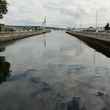
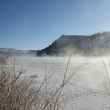



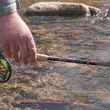
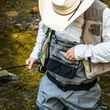




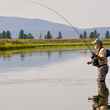



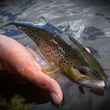
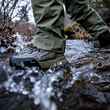
Comments